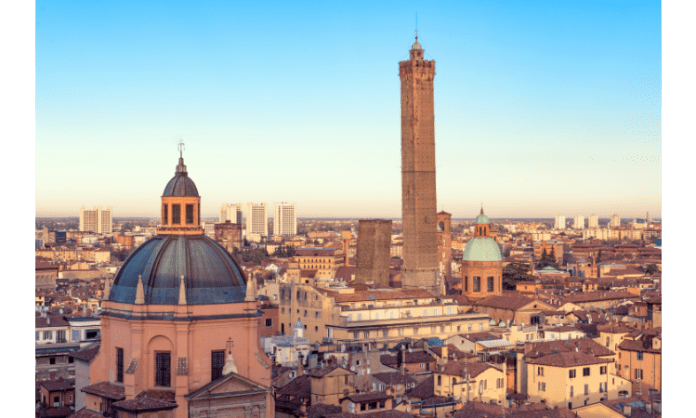
Bologna is one of the most underrated cities in Italy. Despite its beautiful historic center, rich food culture, and lively yet relaxed atmosphere, it’s often overlooked by tourists on the usual Venice-Florence-Rome route.
This is a shame as there are so many things to do in Bologna from climbing medieval towers to fun food tours, and it makes a great base for exploring other attractions in the region. Bologna is a great place to travel with kids. It has plenty of fun things to do and see like museums, so you can stay busy and engaged while you’re there.
This article will give you a few ideas for how to make your trip extra fun and interesting, historic, fun, and unusual things to do in Bologna.
Where is Bologna
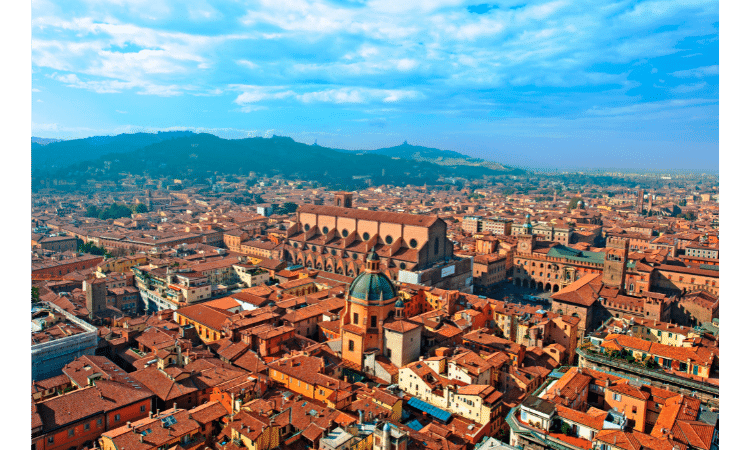
Bologna is the capital of the Emilia-Romagna region in northern Italy. It’s located between Florence (to the south) and Venice (to the north) and is easily accessible by train. It has an amazing history and culture, as well as some really beautiful landmarks and architecture. There are lots of things to do when you’re there.
Bologna is known for
Bologna has three nicknames that reflect what it is best known for.
La Dotta (The Learned)
Bologna University, founded in 1088, is the oldest university and a landmark in the western world and students came from all over the world to study there. There is still a large student population which adds to the city’s vibrant atmosphere, especially at aperitivo time.
La Grassa (The Fat)
For many people coming to Bologna is a culinary pilgrimage. The Emilia-Romagna region is where many of Italy’s top products come from—balsamic vinegar, parmesan cheese, Parma ham, and mortadella.
The food here is rich and decadent and the markets are superb. I share the best things to do in Bologna for foodies below.
La Rossa (The Red)
Originally “The Red” nickname referred to the terracotta tiled roofs of the city, which are best seen from the top of Asinelli Tower.
In later years it also alluded to the city’s leftist political leanings, especially during and after World War II when it was a stronghold of the resistance against Nazism.
Things to do in Bologna
Climb Asinelli Tower
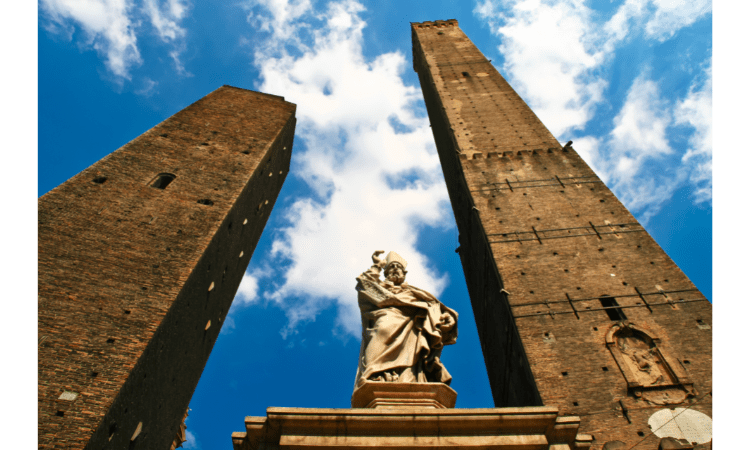
Asinelli Tower is a massive, ancient, and one of the landmarks tower in the center of Bologna that dates back to the 11th century. It’s one of the tallest structures in town and provides an incredible view of the city.
Take a walk up to the top by taking the stairs—you’ll be rewarded with a 360-degree view of Bologna’s cobblestoned streets, medieval buildings, and red-tiled roofs. If you’re looking for an activity that will give you some great photos, this is it. You’ll be able to see everything from inside the tower itself—it’s a very unique experience.
Neptune Fountain
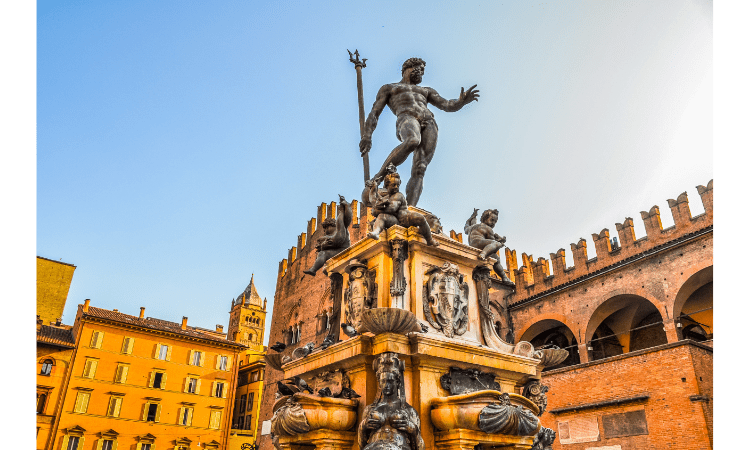
The Neptune Fountain, located in Piazza Maggiore, is a beautiful example of the city’s Renaissance landmarks in architecture. The fountain was built in 1565 and bears the signature of Giambologna, who is also known for his work on the famous Mercury statue in Florence. The fountain was commissioned by Pope Pius IV and designed to commemorate his election, which occurred on December 8th.
The Neptune Fountain is a magnificent example of Renaissance artistry that depicts Neptune with two sea horses as well as various other sea creatures. The fountain has been restored many times over the years but still retains its original design, which makes it an interesting place to visit when you’re visiting Bologna.
Santuario di Madonna di San Luca
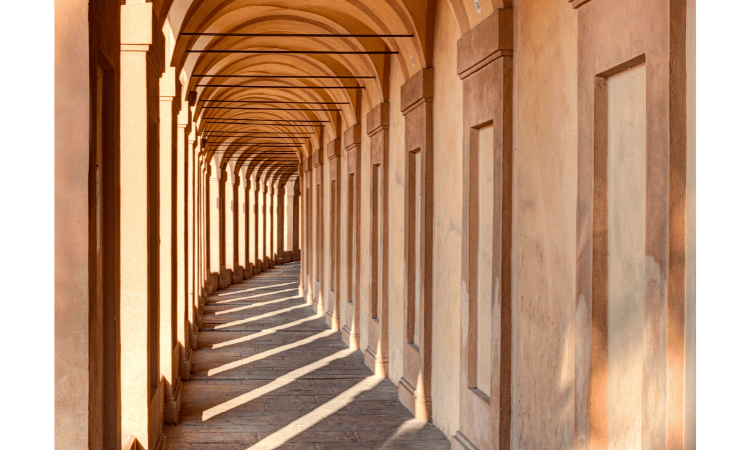
The Sanctuary of San Luca, located on Colle della Guardia, has been the symbol of Bologna as well as a place of religious worship for centuries. It is connected to the city center by a road that, starting from Porta Saragozza, unwinds for four kilometers with a portico that boasts over 600 archways and is the longest in the world. Together with the other city porticoes, it was included in the UNESCO World Heritage Site list in 2021.
The portico started being built in 1674 and, during Ascension week, a procession has been walking along it carrying the Byzantine Madonna with Child to the Cathedral since 1433. The Sanctuary church was, however, built later in the 18th century to replace a previous 15th-century construction.
The sanctuary offers marvelous views over the surrounding landscape. In addition, the panoramic terrace opened in 2017 at a height of 42 meters above Colle della Guardia (300 m asl), enables visitors to admire a unique 180° view of Bologna from the hills to the center stretching out as far as Casalecchio di Reno.
San Pellegrino Park
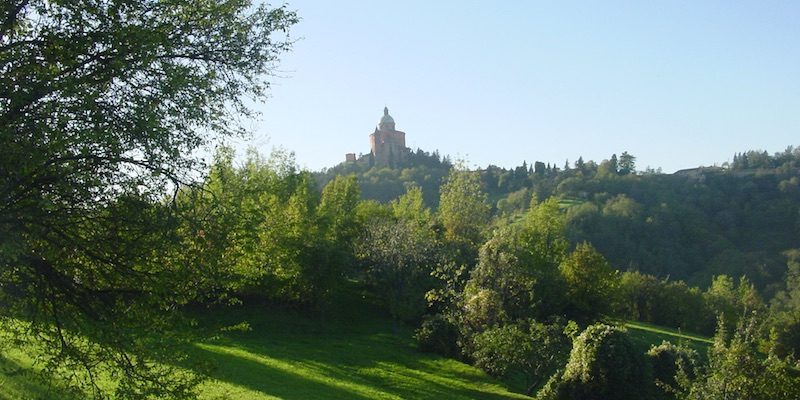
The park is situated in a nice panoramic position on the mountain ridge between the valleys of Meloncello and Ravone and it descends from the Monte Albano towards the Villa Spada. There is a nice view of San Luca. Originally, there were two country houses Casa Giuliani and Casa Breventan existing already in the 18th century, known as Luogo Piccolo (the “Small Place”) and Luogo Grande (the “Large Place”) and owned by the family of senators De Buoi and then by the family Breventani.
In the second half of the 19th century, Luigi and Giuseppe Breventani, both clergymen, founded the ecclesiastic institution San Pellegrino for old people and donated their property to that institution. (Luigi dedicated his life also to important research of the local history.) The adaptation of the original area was focused on the conservation of the historical site; lawns replaced cultivations and alleys of fruit trees remained alongside old roads and fields.
Seven Churches of Santo Stefano
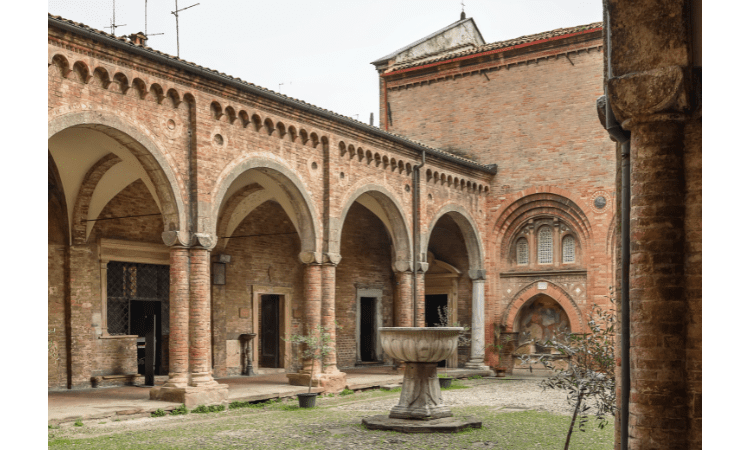
Santo Stefano is the most unique complex in Bologna, as it is a true city sanctuary and the cradle of our ancestor’s faith. It is mainly known as “sette chiese” (“seven churches”) because it is the merger of multiple buildings erected in different eras. The Seven Churches of Santo Stefano are a series of churches that were built in the Middle Ages on top of what was originally an ancient Roman temple. The seven churches are all named after saints, but most of them have been modified over the years and it is hard to tell what was originally there.
In addition to the churches, there is also an adjoining museum with exhibits about the history of Bologna and its people. The exhibits range from prehistoric landmarks tools and weapons to 20th-century pieces reflecting on fascism and the Holocaust.
Piazza Maggiore
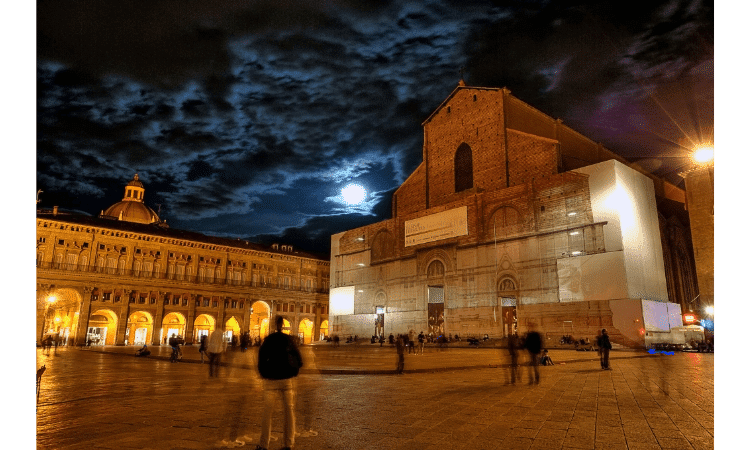
Piazza Maggiore is the main square in Bologna, and it’s one of the biggest in Europe. The piazza is surrounded by some of the city’s most important historical buildings, including the Basilica di San Petronio and Palazzo Re Enzo (a museum today).
The square itself is a beautiful place to sit down and enjoy a coffee or gelato with friends, as well as a great spot for street performers. If you’re lucky, you’ll catch some acrobatic dancers. In addition to being a great place to hang out, Piazza Maggiore also hosts many events throughout the year. Some of Bologna’s most popular festivals take place here: Storica di Santa Lucia (a festival celebrating light) and Festa di San Prospero (a festival celebrating food).
Go Food Shopping in the Quadrilatero

The Quadrilatero is the oldest district in Bologna. It’s home to a number of traditional, family-owned shops, and it’s also where you can go food shopping. There are tons of different ways to do this, but the most fun way is to simply walk around and shop for whatever looks appealing.
The Quadrilatero has an incredible range of vendors—from local cheese makers to specialty butchers and fishmongers—so you can find anything your heart desires. If you want to enjoy some authentic Italian cuisine, then head over to Via Emilia Levante and check out Mercato delle Erbe or Mercato delle Erbe II. You’ll find stalls selling all kinds of fresh fruit, vegetables, meats, and seafood there. There are also many restaurants that serve traditional Bolognese cuisine at very reasonable prices. The Quadrilatero is also home to many bars and pubs where you can enjoy a glass of wine or beer while chatting with friends or co-workers.
Conclusion
Bologna offers many fun and unusual things to do for travelers. The city is home to one of the oldest universities in the world, as well as a rich history that has left behind many unique sites and museums for tourists to explore. Bologna is a beautiful city with so much culture and charm, it’s easy to get lost in the nooks and crannies of the city if you aren’t careful. We hope this guide helps you navigate all that Bologna has to offer.











